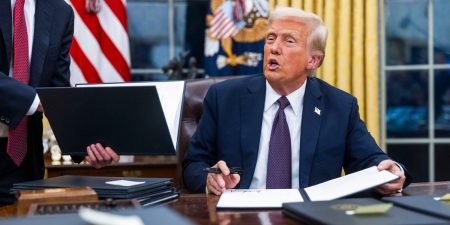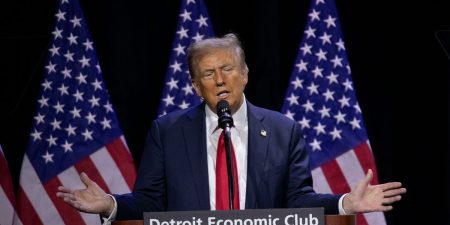Understanding the U.S. Trade Deficit: An Overview
The United States has faced a persisting trade deficit since 1975, with a significant surge reaching $918.4 billion in 2024. This marks a 17% increase from 2023, though slightly less than the record high of $944.8 billion in 2022. The trade deficit, which occurs when a nation imports more than it exports, has been a focal point of President Donald Trump’s economic agenda. His policies aim to reverse this trend, emphasizing an "America First Trade Policy" to reduce the deficit and promote domestic economic investment.
Trump’s Approach to Addressing the Trade Deficit
President Trump has pursued various measures to tackle the trade imbalance, including the implementation of tariffs on key trading partners such as Canada, Mexico, and China. These tariffs, ranging from 10% to 25%, are designed to reduce foreign imports and encourage domestic production. Trump’s strategy extends beyond economics, also addressing concerns over illegal immigration and border security, particularly with neighboring countries.
The Impact of the Strong Dollar on U.S. Trade
The strength of the U.S. dollar plays a crucial role in trade dynamics, making imports cheaper for American consumers but also increasing the cost of U.S. exports abroad. This duality affects the balance of trade, potentially hindering domestic industries by making U.S. products less competitive in the global market. The interplay between currency strength and trade balances remains a significant factor in shaping the nation’s economic strategies.
Geopolitical Implications and Country-Specific Trade Dynamics
The U.S. trade deficit with specific countries highlights the complexity of global trade relations. For instance, while the deficit with China decreased to $295 billion in 2024 from a record $418 billion in 2018, the deficit with Mexico grew significantly to $172 billion. Conversely, the U.S. enjoys a trade surplus with Canada when excluding oil and gas. These dynamics underscore the varied impacts of trade policies across different regions and economies.
Criticisms and Challenges of Trump’s Trade Policies
Critics argue that Trump’s tariffs, while intended to reduce the trade deficit, may have unintended consequences such as higher consumer prices and retaliatory measures from trading partners. For example, China imposed a 10% tariff on select U.S. imports in response, affecting American exporters. These actions highlight the delicate balance required in trade negotiations and the potential risks of protectionist policies on global trade relations.
Future Outlook and the Path Ahead
As the U.S. navigates its trade relationships, the impact of Trump’s policies on the trade deficit and broader economy remains a critical area of focus. Future strategies will likely need to address the complexities of global trade, balancing domestic interests with international cooperation. The persistence of the trade deficit underscores the ongoing challenges in achieving a balanced trade landscape and the need for nuanced approaches to economic policy.












